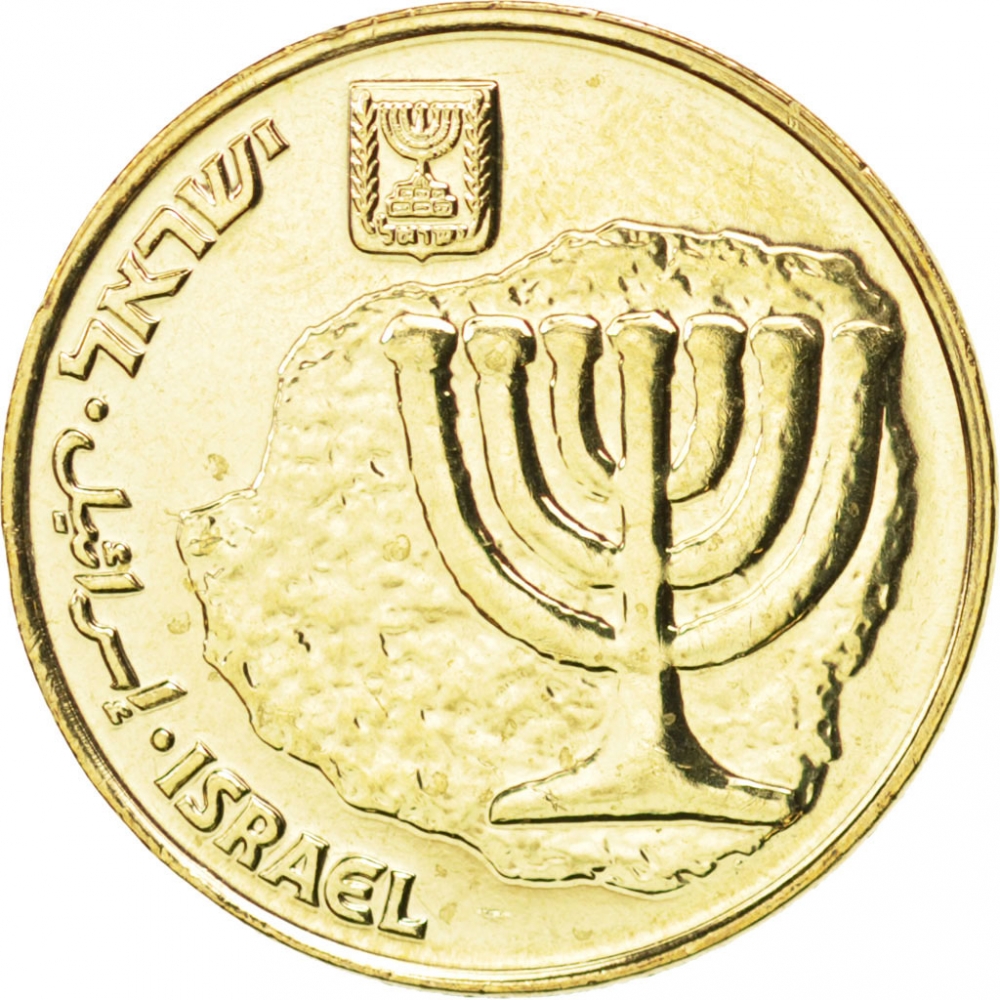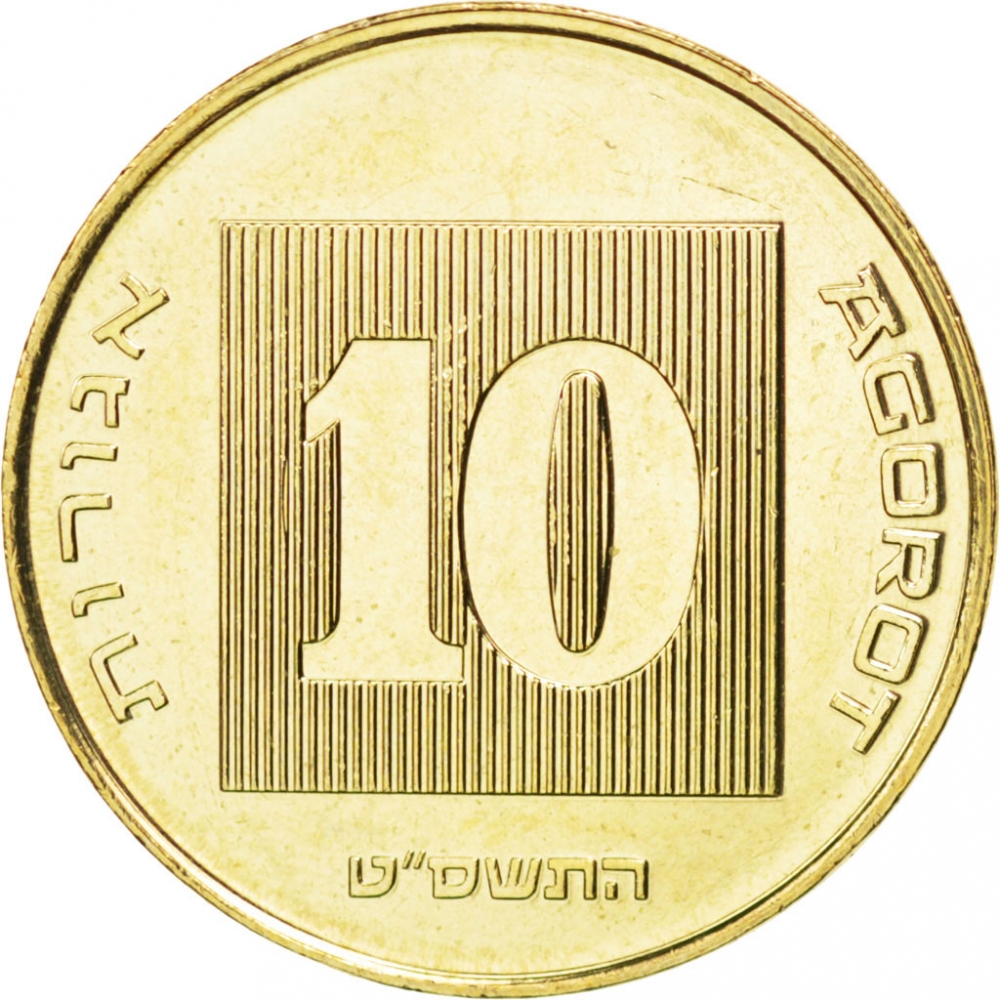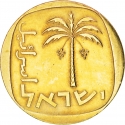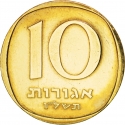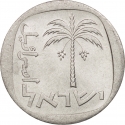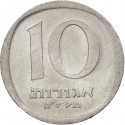You are about to finish your registration. Please check your mailbox (including spam folder). There should be a letter with a confirmation link. Check setting to make sure that your e-mail address is correct.
Send letter againDescription
The design by Nathan Karp first appeared on the 100 Sheqalim coin issued by the Bank of Israel on 2 May 1984. When the old Shekel currency was replaced by the new Shekel in September 1985, the design was copied to the new 10 Agorot coin, which was equal in value to the old 100 Sheqalim.
The ten Agorot controversy refers to a conspiracy theory promoted by Palestine Liberation Organization chairman Yasser Arafat's appearance at a specially convened session of the UN Security Council in Geneva on 25 May 1990. At the session, Arafat claimed that the obverse design of an Israeli ten Agorot coin showed a map of "Greater Israel" that represented Zionist expansionist goals.
Date of issue: September 4, 1985
Obverse

|
Replica of a coin issued by Antigonus II Mattathias (37-40 B.C.E.) with the seven-branched candelabrum; the emblem of the State of Israel (menorah flanked by olive branches); "Israel" in Hebrew, Arabic and English. إسرائيل ישראל ISRAEL |
|---|---|
Reverse

|
Denomination "10" on a square background; "Agorot" in Hebrew and English; date in Hebrew. אגורה AGOROT |
| Edge |
Swap now (2 offers)
Characteristics
| Material | Aluminium Bronze |
| Weight | 4 g |
| Diameter | 22 mm |
| Thickness | 1.61 mm |
| Shape |
|
| Alignment | Medal |
| Mints |
Casa de Moneda de Chile (So) Jerusalem Mint Korea Minting and Security Printing Corporation (KOMSCO) Mint of Norway Stuttgart State Mint (F) Warsaw Mint (M/W)
|
